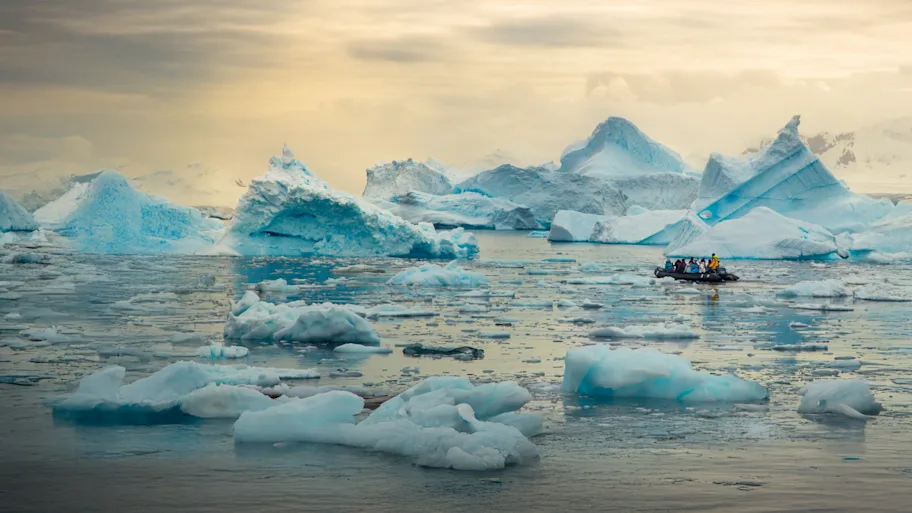Syllabus:
GS-3: Conservation, environmental pollution and degradation, environmental impact assessment
Context:
A new study led by University of Exeter finds that five major geoengineering proposals for the polar regions fail to meet key standards for responsible climate action.
Polar Geoengineering Techniques
Stratospheric Aerosol Injection (SAI):
- Releases reflective aerosols into the upper atmosphere to reduce sunlight and cool the planet.
- potential impacts: lowering global temperatures, altering rainfall patterns and affecting the ozone layer.
Sea Curtains or Sea Walls:
- Large floating barriers anchored to the seabed to block warm ocean currents from melting polar ice sheets.
- Involve significant engineering and ecological challenges, including impacts on marine ecosystems.
Sea Ice Management:
- Scatters glass microbeads over ice surfaces to increase reflectivity and slow melting.
- Raises concerns about microplastic pollution and long-term effects on ocean health.
Basal Water Removal:
- Pumps water from beneath glaciers to slow ice movement and reduce ice loss.
- Technically complex, energy-intensive, and uncertain in large-scale effectiveness.
Ocean Fertilisation:
- Adds nutrients such as iron to polar waters to stimulate phytoplankton growth and enhance CO₂ absorption.
- Risk unintended ecological effects such as algal blooms and oxygen depletion in marine habitats.
Key Challenges
Effectiveness and Technical Challenges:
- SAI: largely ineffective during polar winters due to the absence of sunlight and offers minimal additional benefit in summers, as ice and snow already reflect most solar radiation.
- Sea curtain: Large-scale underwater projects face technical and installation challenges, including placing heavy foundations in deep, uneven seabed environments harsher than land conditions.
- Sea-Ice Freezing Pumps: Arctic methods requiring around 100 million pumps, consuming a million units of electricity annually for a decade, making this an impractical energy burden and financial burden.
- Greenland Installations: Somewhat more feasible, but the net impact on mitigating sea level rise remains uncertain.
Environmental and Ecological Risks:
- Cooling polar regions independently risks disrupting global weather and seasonal patterns, with severe consequences for food security and national stability.
- Large underwater barriers may disrupt oceanic circulation, alter sea ice dynamics, and impede migratory routes of marine life, including fish and marine mammals feeding at depth.
- Materials used for geoengineering must avoid releasing toxic substances as they degrade, preventing further harm to fragile nutrient cycles and ecosystems.
- Ocean fertilization techniques risk uncontrolled species dominance shifts, potentially disturbing marine food webs.
Logistical and Financial Hurdles:
- The remote and hostile environment of Antarctica’s Amundsen Sea restricts vessel access to few months annually. Specialized ships for installation costing approximately half a billion dollars each.
- Scaling infrastructure, such as widespread sea-ice freezing pumps, demands investments in the hundreds of billions of dollars, raising serious feasibility concerns.
- No international legal or governance framework clarifies responsibility or costs coveraage if geoengineering fail or cause harm.
Risks of Sudden Project Termination:
- Abrupt halting of interventions like SAI could cause global temperatures to surge rapidly within 10–20 years as the greenhouse effect previously masked returns unchecked, potentially exacerbating climate impacts.
Way Forward: Decarbonisation
- Decarbonisation: Directly tackles the root cause of climate change by reducing greenhouse gases in the atmosphere, making it the most effective way to prevent catastrophic warming.
- Sustainable and Lasting Impact: Unlike geoengineering or delayed adaptation that mask symptoms, decarbonisation offers a sustainable, long-term solution by addressing the source of global warming.
- Additional Environmental Benefits: Reducing emissions improves air quality, decreases pollution, and enhances public health.
- Building Long-term Stability: Every tonne of carbon avoided today reduces future climate shocks, offering the stability that risky geoengineering projects seek to achieve.
- Clear Pathway to Resilience: Prioritizing rapid decarbonisation alongside ecosystem restoration and renewable energy adoption ensures a balanced approach to achieving climate resilience and environmental sustainability.
Sources:
The Hindu
Frontiersin

